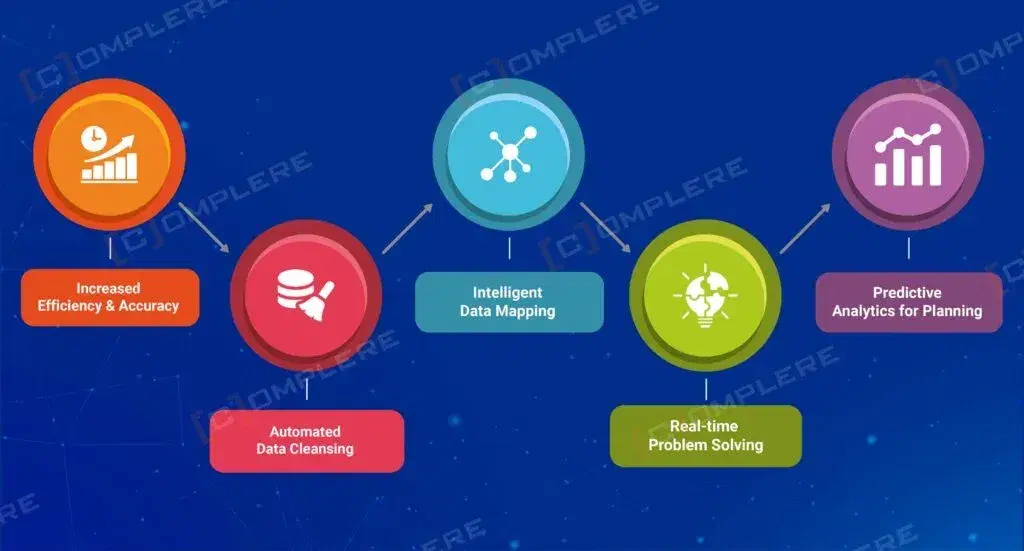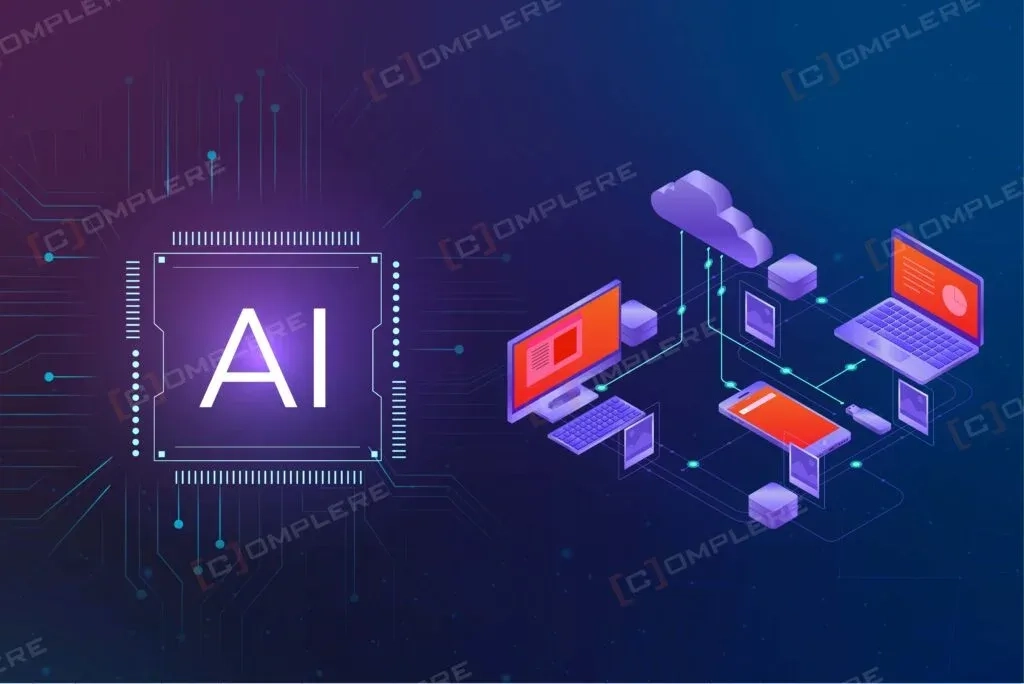Introduction
In 2024, data migration is going through big innovative changes. We must give a big credit to artificial intelligence for this innovative improvement. Data migration is the process of transferring data from one system to another. Now this process has become faster, smarter, and more efficient. This integration is not just changing the way you approach data transfer but also it is creating new standards for accuracy, speed, and problem-solving in this sector. As AI continues to combine data migration tools, data migration software and services for example AWS Database Migration Service, it gives you a clear guidance to get success in this sector. So, let us understand more about data migration trends and the impact of AI on data migration trends in 2024:
What do you mean by Data Migration Trends?
Data migration trends are impactful movements, technologies, strategies, and practices that are setting the exact way to transfer data from one system to another. These trends represent technological advancements, latest business requirements along with its regulatory requirements, and the increasing load and challenges of data. From cloud migration to real-time data synchronization, these trends explain how efficiently and effectively organizations can transfer their data to deliver their operational, analytical, and compliance needs in an improved way.
Comparison between Data Migration Trends in 2023 vs. 2024

1. Cloud Migration Continues to Dominate
- 2023: Cloud migration was already a significant trend. Businesses were transferring their data to cloud platforms like AWS, Azure, and Google Cloud to improve scalability, flexibility, and cost savings. In the year services like AWS’s Database Migration Service worked so well.
- 2024: The trend of cloud migration continued and even worked in a more surprising way. By focusing on multi-cloud strategies, it effectively reduced vendor lock-in and improved flexibility. The automation and user-friendliness of cloud migration tools and services made migration processes efficient and flawless.
2. The Entry of AI and Automation
- 2023: The impact of AI on data migration processes is appreciable. It has improved it by automating routine tasks and increasing accuracy and speed.
- 2024: The role of AI in data migration has expanded in a very short time. Now it is providing much more efficient data analysis for migration planning, real-time problem-solving during the process, and post-migration data integrity tests. AI-based tools are supporting so well to make sure the success of your data migration.
3. Increased Focus on Security and Compliance

- 2023: Security and compliance were always an important requirement in 2023. It was due to increased threats to business data. It was also required to meet regulatory compliance requirements. In 2023 businesses will adopt stricter data protection solutions during migration processes.
- 2024: With the start of this year data breaches became more frequent and costly. That automatically increased the requirement of strict implementation of security and compliance. Encryption, data masking, and comprehensive access controls are the current standard features of data migration tools and strategies. Services of data compliance and data governance have become an important part of migration process in 2024.
4. Development of Real-time Data Migration
- 2023: Real-time data migration was a desired but challenging goal for many businesses. The technology was at a developing stage. That was the reason why only a few businesses were able to implement it effectively.
- 2024: At opposite in 2024 advancements came data technologies. This advancement helped in wider adoption of event-based architectures. These architectures were designed to support real-time data migration more realistic, achievable and valuable. Businesses were happy and they started supporting the statement that data migration solutions support real-time capabilities. That is an efficient source to make sure that their operations are based on the most reliable and latest data available.
5. The Shift Towards Self-service and Democratization
- 2023: Data migration was a specialized process this year. This process required expert intervention; this specialization was also a challenge to find such an expert person. The concern about cost was also a big matter to think about.
- 2024: There is a trend for self-service data migration tools. These tools allow non-technical users to perform migrations with the least support. This change in 2024 is helping businesses with better flexibility. Also, it is effectively reducing the dependency on specialized resources.
What will be the Impact of AI on Data Migration Trends in 2024?

1. Increased Efficiency and Accuracy
AI algorithms are so capable, and they follow constant learning and adaptation rules. This specialization makes AI perfect for identifying patterns and predicting issues before they appear during your data migration process. This way you can make sure that data is transferred with increased efficiency and accuracy. All that you get with reduced downtime and mistakes.
2. Automated Data Cleansing
Data migration is not only transferring data; it is also about ensuring your data’s quality in the new environment. AI-based data migration tools can automatically clean data, remove duplicate files and correct mistakes without human interference. This automatically improves the quality of data migration and saves many hours of manual cleanup.
3. Intelligent Data Mapping
Mapping data from the source system to the destination system is one of the biggest challenges in data migration. AI has simplified this process with the help of intelligent data mapping. Now it automatically identifies relationships and data structures. That improves the speed of your data migration process and reduces unexpected mistakes.
4. Real-time Problem Solving
AI makes your data migration process much easier and more efficient. This process becomes capable of identifying and solving challenges in real-time. Whether it is about resource adjustment to manage big volumes of data or troubleshooting unexpected mistakes, AI provides real-time solutions along with a flawless migration experience.
5. Predictive Analytics for Planning
The predictive analytics capabilities of AI support organizations to identify challenges and results of your migration process. It allows you better planning and resource allocation and completed migration within deadlines and your budget.
The integration of AI into data migration works great. It is more than making existing processes faster or more efficient. The integration of AI in Data Migration assures that each migration can be better than the last. It continuously improves the process based on last migration experiences. Automation for challenges allows data professionals to focus on strategic initiatives to achieve better results in data migration.
Conclusion
The impacts of AI in 2024 are increased efficiency and accuracy. Also automated data cleansing, intelligent data mapping, real-time problem-solving, and predictive analytics support better planning. The perfect synergy between AI and data migration tools and data migration software, including AWS Database Migration Service, is making the data migration process more advanced. Also, it provides better access to different types of businesses and organizations.













